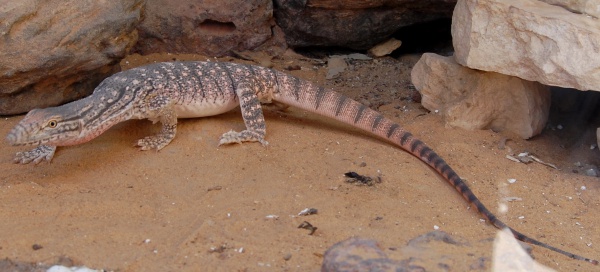Facts About Desert monitor
Meet the Desert Monitor: The Desert's Majestic Lizard
The desert monitor, scientifically known as *Varanus griseus*, is a captivating species of monitor lizard that inhabits the arid landscapes of North Africa, Central Asia, and South Asia. This species is divided into three subspecies: the Grey Monitor (*V. g. griseus*), the Caspian Monitor (*V. g. caspius*), and the Indian Desert Monitor (*V. g. koniecznyi*). As carnivores, these lizards enjoy a diverse diet of vertebrates and invertebrates.
Description:
Desert monitors exhibit a variety of colors and patterns, making them a visual marvel. Males are typically larger and more robust than females. These lizards shed their skin numerous times a year and are well-adapted to desert conditions, even showcasing remarkable swimming and diving abilities. Each subspecies displays unique coloration and has specific habitat preferences.
Lifestyle:
From September to April, desert monitors hibernate, becoming active from May to July. Their body temperature significantly influences their activity levels, with cooler temperatures causing them to slow down. They reproduce between May and July, with their eggs requiring approximately 120 days to hatch.
Feeding and Diet:
As true carnivores, desert monitors have a varied diet that includes mammals, reptiles, birds, amphibians, insects, and other invertebrates. There is some scientific debate regarding the presence of venom glands in these lizards, with some studies suggesting they might possess them.
Conservation:
While desert monitors are not generally considered at risk across most of their range, the Caspian Monitor subspecies faces significant challenges due to habitat loss driven by agricultural activities. Additionally, commercial hunting and the pet trade pose severe threats, with regulations varying across different regions.
Captivity:
Desert monitors are not well-suited for life in captivity, often experiencing shorter lifespans compared to their wild counterparts. To thrive, they require very specific environmental conditions and a proper diet.
Distribution:
These lizards are widespread across various countries in North Africa, Central Asia, and South Asia. The type locality for the species is Dardsha, situated on the coast of the Caspian Sea.

 Kazakhstan
Kazakhstan